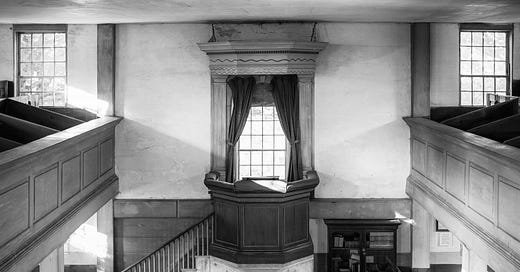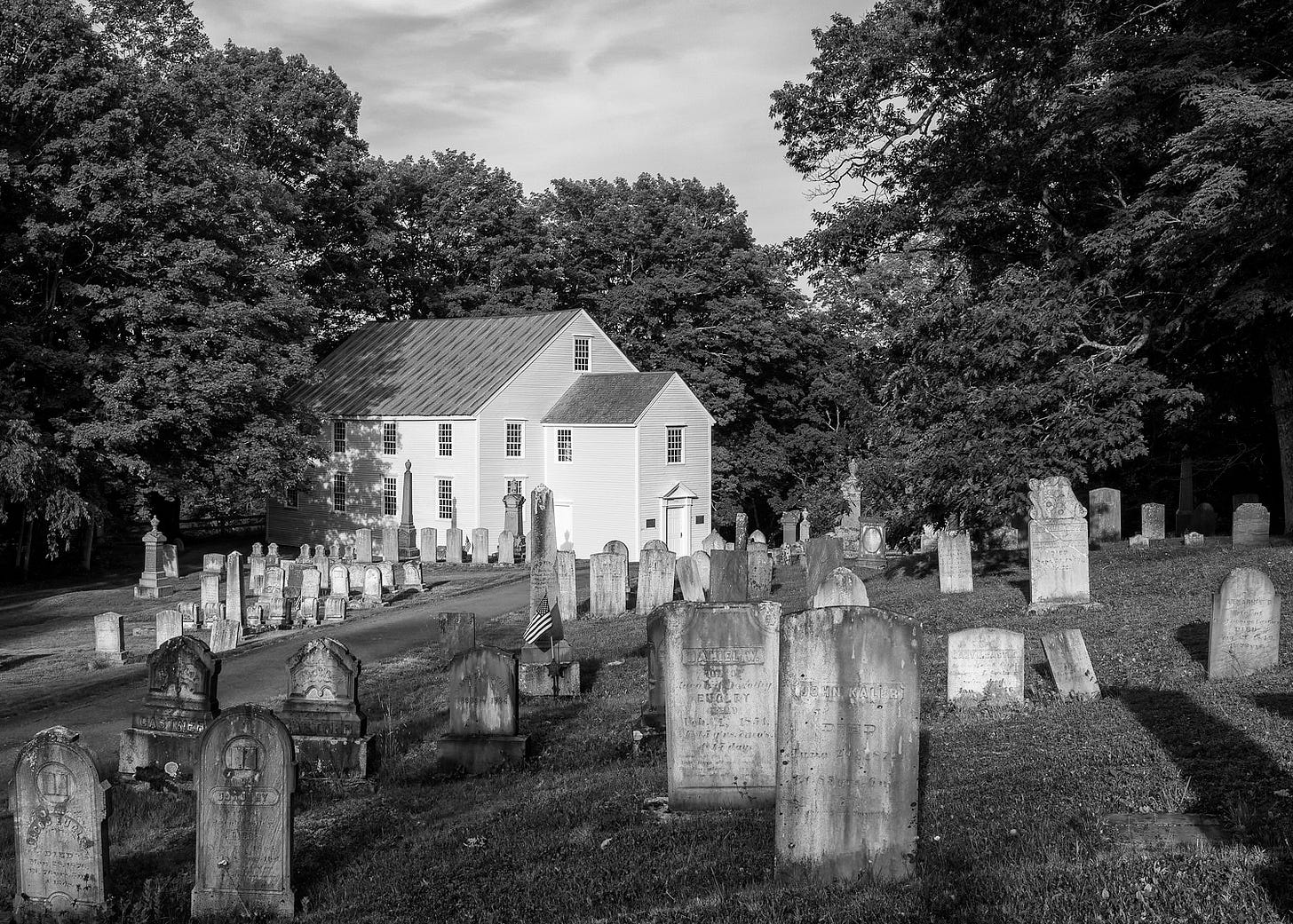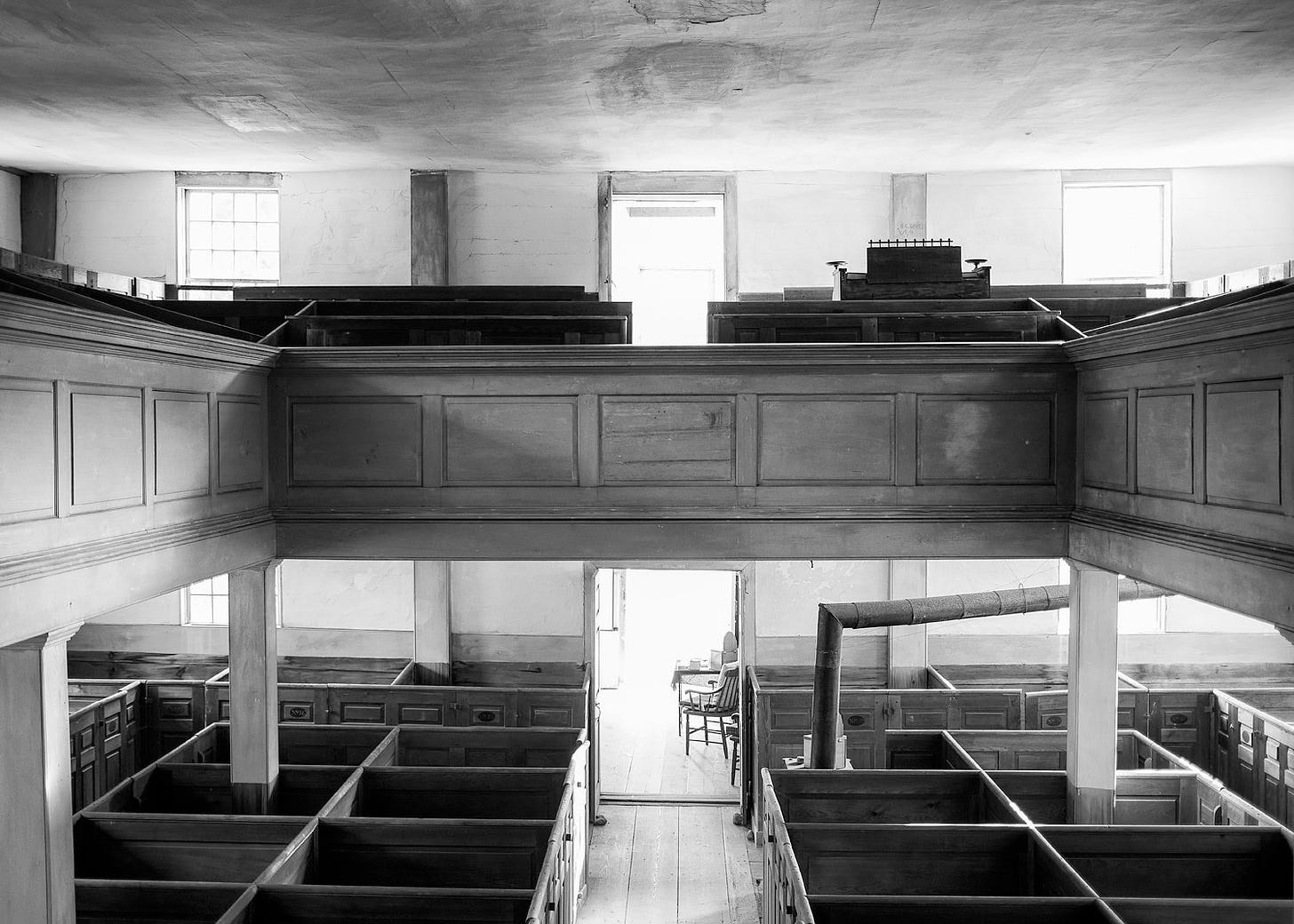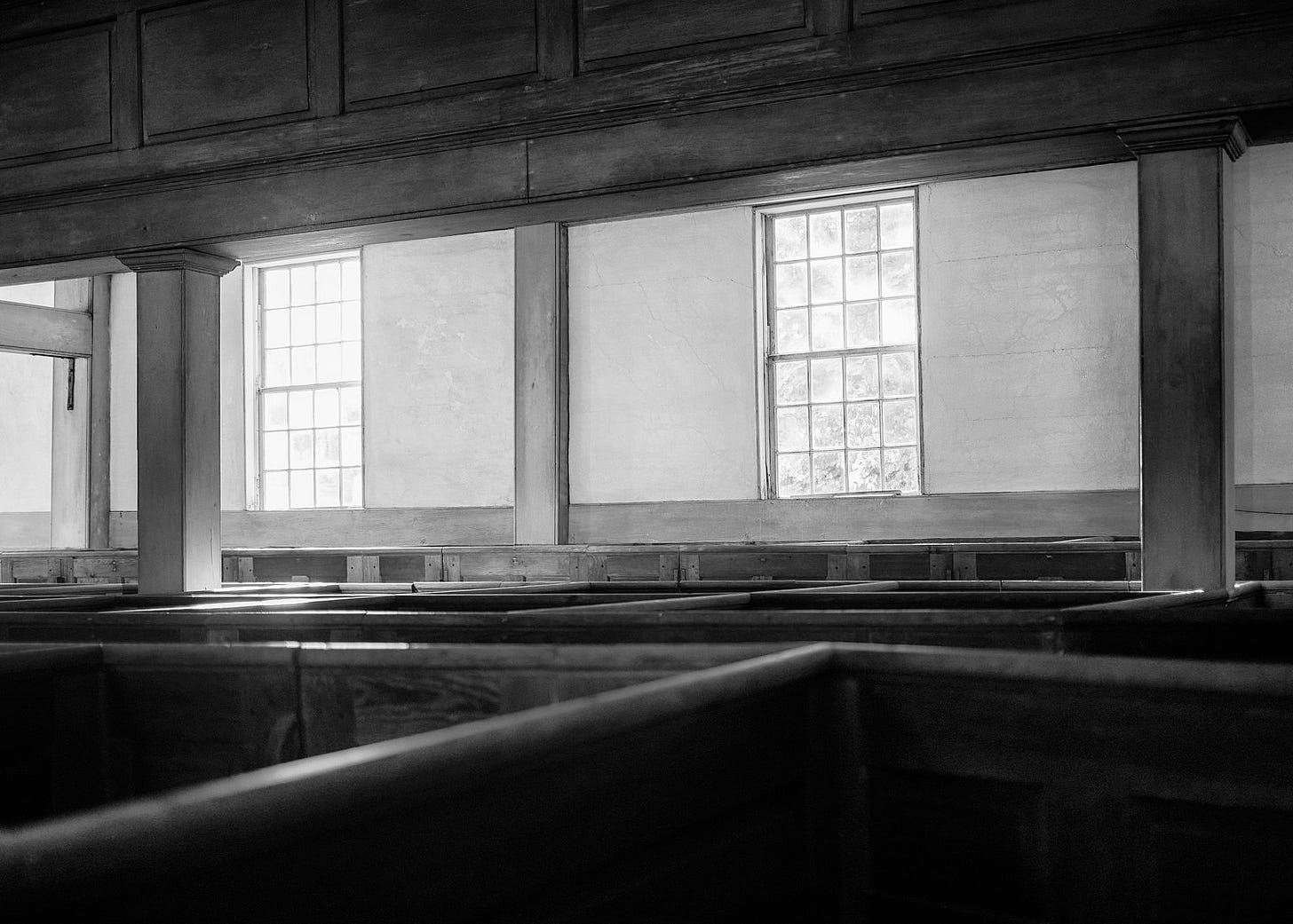The Old German Meeting House features a hand-carved, wine-goblet pulpit.
Among the more interesting places I have visited in Maine is the Old German Meeting House in Waldoboro. One of the oldest churches in the state, it was built in 1772 on the north side of the Medomak River by early German immigrants to the area. In. 1794, they took the church apart, board by board, and loaded it onto sleds. When the river froze in winter, they used oxen to pull the sleds across the river and up the hill, where they rebuilt the church and established a burial ground on the other side. It still stands on this hill, looking very much like it did back then.
The German Protestant Cemetery dates to the late 1700s.
The first time I visited this church, the exterior was being repainted yellow. The previous coat had faded to white over the years. This year, the painting had been completed and everything looked fresh. Inside this two-story structure, plaster walls feature exposed beams and large, paned windows. Most of the windows still contain old glass, slightly obscuring the view beyond. A balcony wraps around three sides.
Two features immediately caught my attention when I stepped inside the meeting house. The first was that there were box pews instead of bench pews, though the church had only rudimentary benches when first constructed. These boxes were purchased by families in exchange for a deed; most have been passed down through the generations. Because the church was not heated, families would bring embers from their home hearth in a bucket to church and set it in the center of their family box to keep everyone warm. At some point, a small wood-burning stove was added on the first floor, and it remains the only source of heat in the church today. There is no electricity—only natural light from the windows.
The church features box pews instead of bench pews, where families would gather around a bucket of embers from the home hearth to keep warm in winter. There is an organ upstairs, along with additional box pews.
The other interesting feature is the wooden, wine-goblet-shaped pulpit. Considering the height of the pulpit, I assume the preacher’s role was an important one and that it might not be easy to snooze through a service without being seen. Even so, if you look at the backs of benches upstairs, you’ll find many inscriptions and drawings carved into the wood—including one quite elaborate drawing of sailing vessels. In the stairwell, there is a wall with signatures dating back at least to the 1800s and a barrel that was said to have been carried over on the Mayflower.
The Old German Meeting House is maintained as a memorial by the German Protestant Society and is open to the public on a limited basis each summer. Families gather each August for a reunion service.
Natural light remains the only light in this 18th Century meeting house, but there are many windows and your eyes adjust to the light.
Learn with me in 2024.
As the year comes to a close, I am finalizing my teaching schedule for next year. It will include two additional in-person photography workshops—garden photography in Maine and landscape photography in Santa Fe—and some significant changes to online course offerings including a shift away from short Zoom classes to fewer, longer classes offered in an online classroom with a more flexible schedule, more time for practice and more personalized feedback.
The only previous online course I anticipate repeating in 2024 is Advanced Nature Studio, which kicks off January 8. Designed as a deep dive into visual design for the those who have taken Photographing Plants in the Studio, this class offers six weeks of exploring your personal vision using setups, lighting and subjects you most enjoy working with. Some of the topics include:
Designing an image
Creating more compelling images with form, texture and gesture
Harnessing the emotional power of color (or black and white)
Creating mood and drama with light
Moving beyond image capture to interpreting your images more creatively
You will complete this course with a stronger sense of visual design, what makes images work, and thoughts about how you want your own photographs to look and feel. Those who have taken this course in the past are welcome to join in again for a deeper dive, some off-season motivation, and a strong, supportive and creative community.








I've photographed there too but love reading your research about the church.
Hello Lee Anne,
Thank you for this interesting article ... and great photos. Someday I would love to visit the Meeting House. I can imagine to photographing it in all its beautiful natural light.